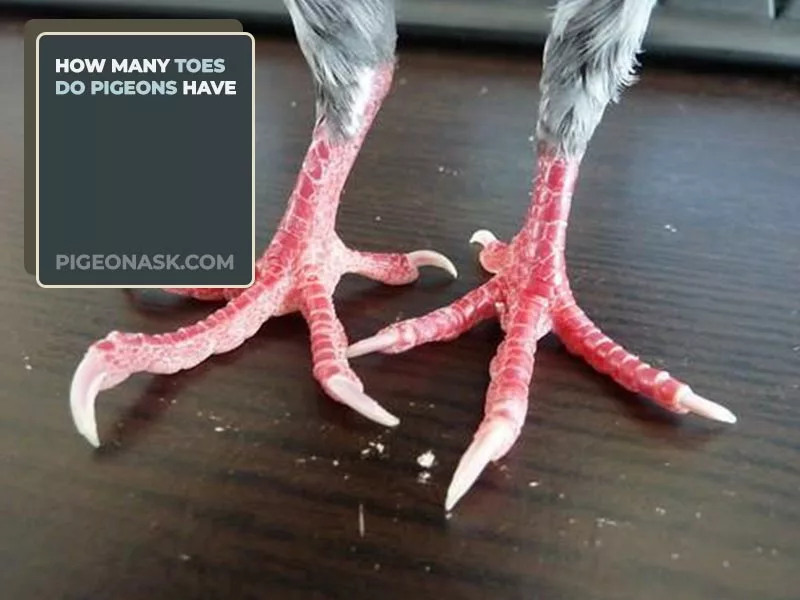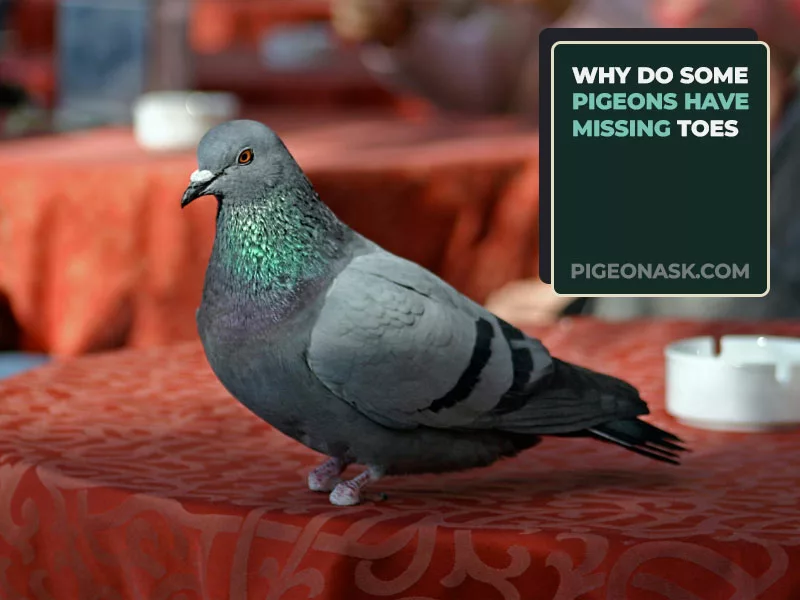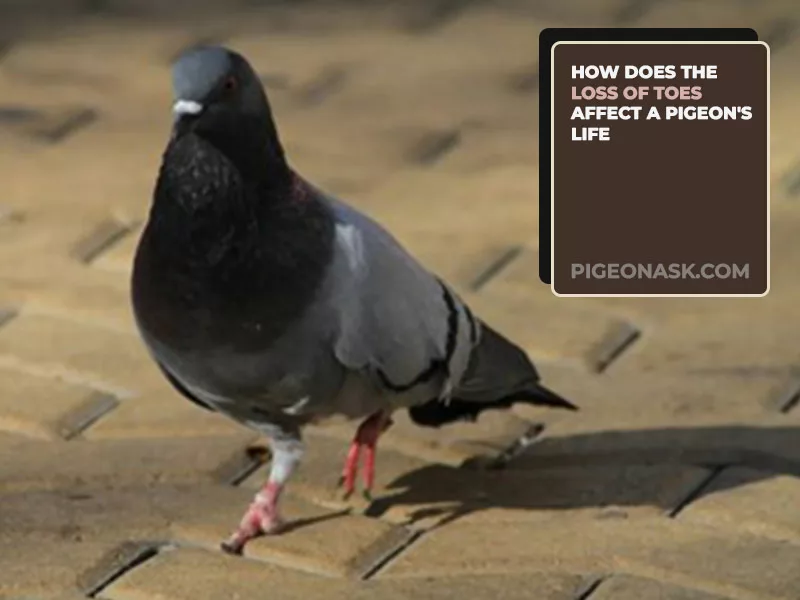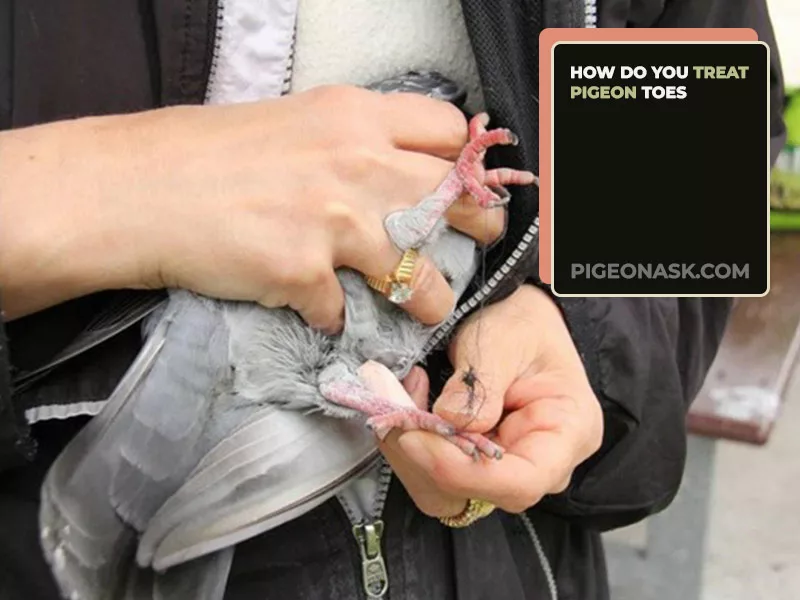Why Do Pigeons Lose Toes?
Pigeons have survived the rise of civilization of human beings far better than any other animals in the world. As cities grew and pollution increased, pigeons have adapted like no other, practically thriving in the escalating human activity.
We are sure you have seen hundreds of pigeons when taking a lovely stroll in whichever city you live in, but have you noticed how some pigeons are missing toes?
Enough people have noticed how pigeons have knubs in the places their toes should have been and wondered, why do pigeons lose toes?
Surprisingly, the main culprit behind this awful predicament is human hair. Human hair can sometimes wrap around pigeons’ toes and slowly cut off blood circulation in them. Eventually, the toes fall off, leaving the pigeons with knubs in their spots.
This article will give you a more in-depth idea of why pigeons lose their toes and how it affects their daily lives.
Read more about pigeon blogs:
How Many Toes Do Pigeons Have?
Pigeons have a toe arrangement, commonly known as an anisodactyl arrangement amongst ornithologists.
Where one long toe points towards their backs and three toes face forwards. While pigeons are classified as perching birds, they spend a considerable amount of their days running around solid ground.

This is mostly to forage for any junk food they can get their claws on. This anisodactyl arrangement allows their toes to splay themselves wide and flatten, making it far easier for them to walk on them.
Pigeons also have the trait more widely known for the flamingos, where they tuck one foot into their feathers while sleeping.
This keeps pigeons warm and cozy during cold climates. So frostbites could be the answer to why pigeons lose their toes; we know they have a defence mechanism against the cold.
Why Do Some Pigeons Have Missing Toes?
For years, scientists believed pigeons were missing their toes due to infections and chemical pollutants. Pigeons are known for their habit of leaving their excrement (sometimes several times) wherever they visit.

It can be concluded that they must spend a lot of time walking over their own droppings, which can naturally lead to infection from all the germs.
I mean, let’s admit it, pigeons are not the cleanest animals on the planet.
Stringfoot
However, recent studies have shown a correlation between hairdressers and stubbed pigeon toes. The higher number of hairdressers, the more pigeons with stubbed toes in a particular area.
As we mentioned previously, human hair has been found to be the culprit behind the mutilation of pigeon toes.
When salons and hairdressers are cleaned, enough pieces of hair escape the dumpster to become a problem for the pigeons in the area.
Scientists have found many of these birds with human hair wrapped around their toes and feet, and the birds are not able to untangle themselves from the hair.
This phenomenon has been given the name “Stringfoot”.
The ones who are able to escape the wrath of human hair may have suffered too long to recover fully. If the blood circulation to their toes has been cut off for a extended period of time, unfortunately, their toes will remain deformed, or simply fall off.
How Does the Loss of Toes Affect a Pigeon’s Life?
One palaeozoologist named Darren Naish noticed pigeons with missing or damaged toes seemed shabby and unkempt even though they are able to fly about and hunt quite normally.

Let us look at how the loss of toes affects the pigeon’s daily life.
01. Grooming and Scratching
Pigeons use their toes to scratch and groom themselves in the areas on their body where they cannot reach with their beaks. Pigeons with lost toes are not able to get rid of all the insects and ticks that are parasitic in nature, which can cause diseases.
This means they will likely lose feathers in spots and seem more disheveled.
02. Flying
Disheveled feathers are not simply a matter of aesthetics in birds; feather quantity and arrangement can affect their flying.
Pigeons that have an uneven number of feathers can feel unbalanced when flying.
This can slow them down, make it more difficult for them to fly, and make them easy targets for their predators, such as falcons, hawks, and raccoons.
03. Warmth and Protection
One of the ways pigeons protect and keep themselves warm in colder climates and seasons is by puffing up their feathers. They secrete oil from the base of their tail area and spread it over their feathers to waterproof them.
They then puff up, much like we get goosebumps when we are cold, and trap warm air pockets within their feathers to keep themselves insulated.
Without the feathers to protect themselves from the cold, pigeons will have trouble surviving through winters and might look worse for wear even if they can.
04. Mating
As you can expect, a dishevelled looking pigeon is unlikely to attract mates.
A male pigeon’s plumage and health play a huge part when female pigeons select their mates, and these toe-less, missing feathered male counterparts are at a huge disadvantage.
If they are not able to find mates, these pigeons will not be able to have squabs to carry on their bloodline.
How Do You Treat Pigeon Toes?
Thankfully, humans can help pigeons with stringfoot, but before we take any steps, we need to make sure we do not end up hurting these poor birds even more.
If the toes or foot is already ‘Dead’, meaning that the blood circulation has been cut off long enough that even destringing will not help, it would be better for the pigeons to lose their toes naturally.

Destringing the toes can also lead to massive bleeding, and the pigeon will need help recovering for the next few days.
In case the pigeon has a mate and a nest of squabs waiting for them, separating them from the family for so long would also be harmful to them. If these issues are not relevant for the harmed pigeon that you are trying to help, then you can follow the steps below to treat pigeons with stringfoot.
01. Detangling
Use a pair of tweezers and scissors to pull the strings away from their toes and feet and cut them off.
02. Stop Bleeding
If the strings had been deeply embedded into their skin, it is likely that they would start bleeding profusely, which would need to be stopped.
You can use gauze or a clean cloth to do so.
03. Disinfect
Before the area is bandaged, you will need to disinfect the bird’s injured areas.
Pigeons do not walk in the cleanliest of places and will end up getting infections if their toes are not cleaned properly.
04. Bandage
Finally, wrap a bandage on the injured area − nothing that sticks to the skin or gets it off can cause even further injury.
You can now take the bird home while it heals and feed it with nutritious seeds.
05. Additional Tip
You can provide the bird with food while you work on its toes to keep it still and distracted!
Conclusion
And that is the answer to why do pigeons lose toes. We hope this article helps you better understand the danger human activity puts pigeons in.
Something as insignificant as a string of human hair can alter a pigeon’s life so drastically.
For more interesting info about pigeons and pigeon care tips, you can check out our pages on Facebook, Pinterest, and Twitter. Don’t forget to like and share this article on your social if you enjoyed it!
References:
- Edition.cnn.com/2019/11/14/europe/pigeon-toes-hair-study-scli-intl-scn/index.html
- Newscientist.com/article/2223395-pigeons-are-having-their-toes-amputated-by-waste-human-hair-in-paris/
- Sciencedirect.com/science/article/abs/pii/S0006320719306901
- Blogs.scientificamerican.com/tetrapod-zoology/footless-urban-pigeons-suffer-untold-trials-and-tribulations/
Image Credits:
- Photo from thestar.com/news (Toronto Star)
- Photo from Urban Evolution
- Photo from canva.com/photos
